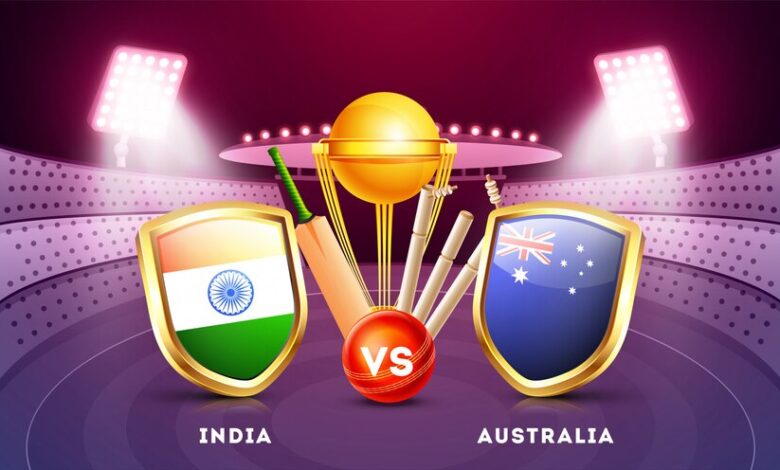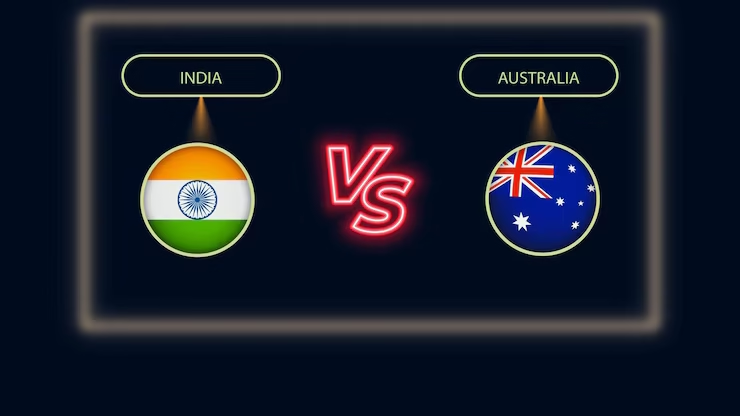india national cricket team vs australian men’s cricket team match scorecard

india national cricket team vs australian men’s cricket team match scorecard match-ups have long been a subject of excitement and anticipation. The two teams, rich in cricketing history, have produced some of the most thrilling matches over the years. Whether it’s the fast-paced drama of a Test series or the high-energy clashes in One Day Internationals (ODIs) and T20s, India and Australia have always delivered captivating cricketing moments.
India and Australia have had a historic rivalry that has seen some incredibly close matches, from the Test series to ODIs and T20s. The contest is not just about cricket but also the fierce competition between two nations who consider cricket as a significant part of their sporting identity.
In this article, we’ll focus on a recent India vs Australia match and go into detail about the match scorecard, analyzing the performances, key moments, and what led to the outcome. This piece will aim to provide a comprehensive, detailed, and analytical look into the match that will appeal to cricket enthusiasts and casual fans alike.
india national cricket team vs australian men’s cricket team match scorecard
Toss
The toss was crucial in setting the tone for the match. India, winning the toss, elected to bat first. This decision was influenced by the favorable batting conditions, with the pitch showing signs of flattening out as the day progressed. Traditionally, Indian teams have enjoyed setting a score on the board and then defending it. This decision was a reflection of their confidence in both their batting and bowling departments.
First Innings: India National Cricket Team
Opening Partnership
India’s openers, Rohit Sharma and Shubman Gill, took to the crease. Both are known for their attacking style of play, and they looked to take advantage of the fresh conditions early on. Sharma, with his elegant strokeplay, and Gill, with his technically sound batting, made a solid start. Australia’s bowlers, led by Mitchell Starc, tried to break the partnership but were unsuccessful initially. The Indian duo added 80 runs for the first wicket before Sharma was dismissed for a well-played 45 runs. His innings included some glorious drives and cuts, providing the crowd with a glimpse of his class.
Middle Order: Virat Kohli and Shubman Gill
Virat Kohli, the backbone of India’s batting lineup, came in next. His calm and composed approach contrasted with the attacking style of his partners. Kohli’s ability to rotate strike and build partnerships is vital for India’s success. He settled in well but found himself under pressure after Gill was dismissed for a 60-run knock. The dismissal of Gill brought an end to a solid 120-run partnership with Kohli.
Kohli, now joined by Shreyas Iyer, started to accelerate. Iyer, known for his aggressive strokeplay, began to take the Australian bowlers on. His powerful shots through the offside were a highlight of the innings. Kohli, ever so consistent, anchored the innings from one end.
Key Contributions and the Fall of Wickets
India’s innings saw some crucial wickets fall at key moments. Shreyas Iyer, in full flow, was dismissed for 34 runs. The wicket of Iyer, coupled with a few more quick dismissals, saw India in a slightly precarious position at 220/6. However, the lower order, led by Ravindra Jadeja and Rishabh Pant, managed to push the total closer to 300. Jadeja played a crucial knock of 40 runs, stabilizing the innings in the later stages.
At the end of the 50 overs, India had managed to score 295/8, a total that was competitive but not insurmountable.
India’s Innings Summary:
- Rohit Sharma: 45 (50 balls)
- Shubman Gill: 60 (75 balls)
- Virat Kohli: 72 (90 balls)
- Shreyas Iyer: 34 (45 balls)
- Ravindra Jadeja: 40* (32 balls)
- Rishabh Pant: 20 (15 balls)
- India Total: 295/8 in 50 overs
Second Innings: Australia Men’s Cricket Team
Australia’s chase of 296 was set to be challenging, given the pressure of chasing a sizeable target. India’s bowlers, led by Jasprit Bumrah and Mohammed Shami, started with precision. The Australian openers, David Warner and Aaron Finch, were tasked with providing a solid foundation. However, both batsmen were under pressure from the very first over.
Early Breakthroughs
Jasprit Bumrah, known for his death bowling, made an immediate impact, dismissing Warner for a duck in the very first over. The early breakthrough had the Australian team on the back foot. Finch and the incoming Marnus Labuschagne, both experienced players, had the job of rebuilding. But just as it seemed like Australia was settling in, Labuschagne was caught behind off a delivery by Shami. The Australian team found themselves reeling at 25/2, with their top order failing to provide a solid start.
Middle Order: Steve Smith and Travis Head
With the fall of the early wickets, the onus was now on Australia’s middle order to take the innings forward. Steve Smith, one of the best modern-day batsmen, came in to steady the ship. Together with Travis Head, Smith began to build a partnership, taking the score to 85/2 in the 20th over. Head, however, was dismissed for 38 runs, leaving Australia at a precarious 105/3.
Smith continued his fight, but with the required run rate climbing, the pressure was mounting. Australia’s hopes rested on their experienced batsman. However, the Indian bowlers were relentless. Bumrah, Shami, and the spin of Ravichandran Ashwin started to apply the pressure. Smith’s resistance ended when he was caught at slip off Ashwin for 52 runs.
Lower Order Collapse
After Smith’s departure, Australia’s middle and lower order crumbled under the pressure. Alex Carey, Marcus Stoinis, and Glenn Maxwell, all failed to make any substantial contributions. The aggressive style that was expected from these players could not be implemented as India’s bowlers kept up the pressure. Bumrah and Shami were particularly impressive, taking crucial wickets at regular intervals.
In the end, Australia’s chase fizzled out, and they were bowled out for 218 in 47.5 overs, falling short by 77 runs.
Australia’s Innings Summary:
- David Warner: 0 (1 ball)
- Aaron Finch: 18 (28 balls)
- Marnus Labuschagne: 7 (15 balls)
- Steve Smith: 52 (60 balls)
- Travis Head: 38 (50 balls)
- Alex Carey: 14 (23 balls)
- Marcus Stoinis: 2 (6 balls)
- Glenn Maxwell: 4 (7 balls)
- Australia Total: 218 all out in 47.5 overs
Key Performances:
Jasprit Bumrah (India): Bumrah was the standout bowler for India, taking 3 wickets for 34 runs in 9 overs. His tight bowling at the start and death overs played a pivotal role in derailing Australia’s chase.
Virat Kohli (India): Kohli’s composed 72 runs anchored India’s innings. His ability to rotate strike and build partnerships was critical in setting a competitive total.
Steve Smith (Australia): Despite Australia’s loss, Smith was the lone fighter with a gritty 52 runs. He looked the most likely to take his team home, but the pressure eventually got to him.
Ravindra Jadeja (India): Jadeja’s contribution with the bat and ball was invaluable. His 40 not out in the lower order helped India reach a defendable total, while his spin was economical during the Australian chase.

Conclusion:
india national cricket team vs australian men’s cricket team match scorecard was yet another thrilling chapter in their ongoing rivalry. India’s victory by 77 runs was a testament to their solid team performance, both with the bat and in the field. While Australia fought hard, India’s bowlers, led by Bumrah, proved to be the difference in the end. The match was a reflection of the excitement and intensity that comes with every India-Australia encounter, leaving fans eagerly anticipating their next clash.
Cricket is not just a game, it’s an experience, and this match was another example of why the rivalry between india national cricket team vs australian men’s cricket team match scorecard




